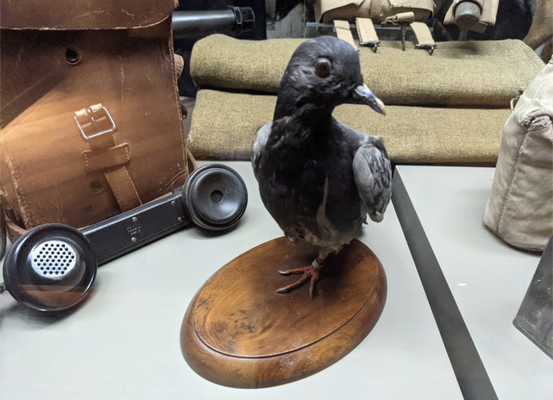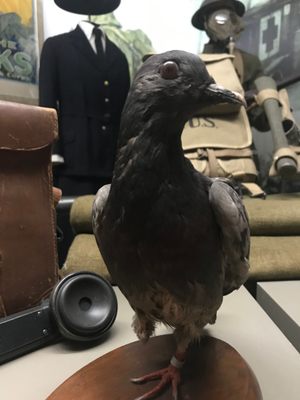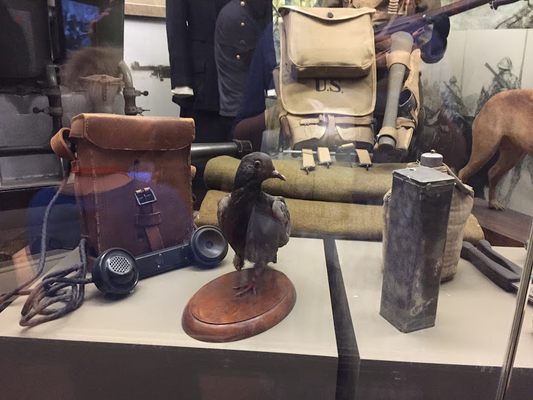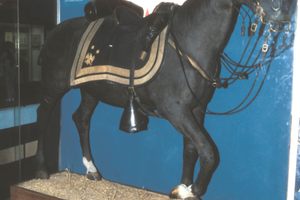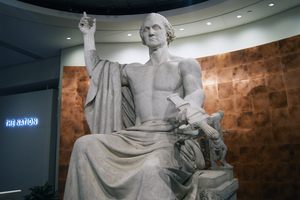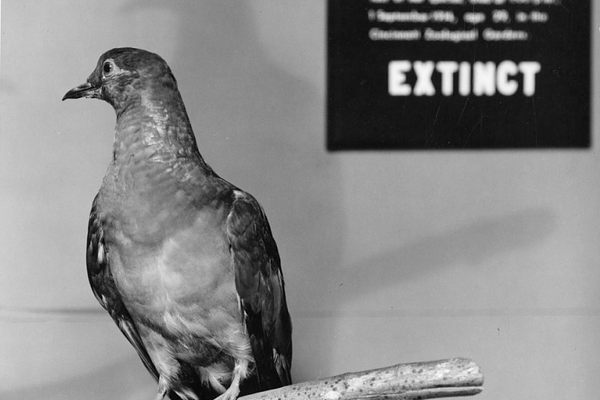About
Major Charles Whittlesey's battalion had charged through enemy lines in 1918, only to be surrounded by Germans and then battered by artillery from fellow Americans who didn't know that they were there. They'd sent out two pigeons with desperate messages to stop the friendly fire, but both had been shot down. Only one pigeon was left: Cher Ami.
Named "Dear Friend" in French, Cher Ami rose above the October 4, 1918 gunfire with a message that said: "We are along the road parallel 276.4. Our artillery is dropping a barrage directly on us. For heaven's sake stop it." He was quickly shot down, yet instantly flew up again, soaring 25 miles in 65 minutes after taking a bullet to the chest and another that nearly severed a foot. Blinded in an eye and soaked with blood, he still arrived with the capsule hanging from his mutilated leg and delivered the message that led to the rescue of the 194 "Lost Battalion" soldiers.
Cher Ami lost his leg, but was given a send-off by General Pershing to the United States where he arrived a hero, honored with numerous medals. He died a year later from his injuries, yet remains an icon of World War I animal heroism. The taxidermy of the brave one-legged pigeon is now in the Smithsonian National Museum of American History's "Price of Freedom: Americans at War" exhibition.
Related Tags
Community Contributors
Added By
Published
May 26, 2013




